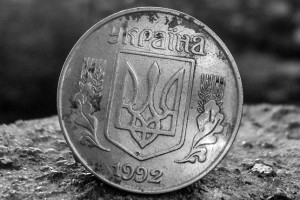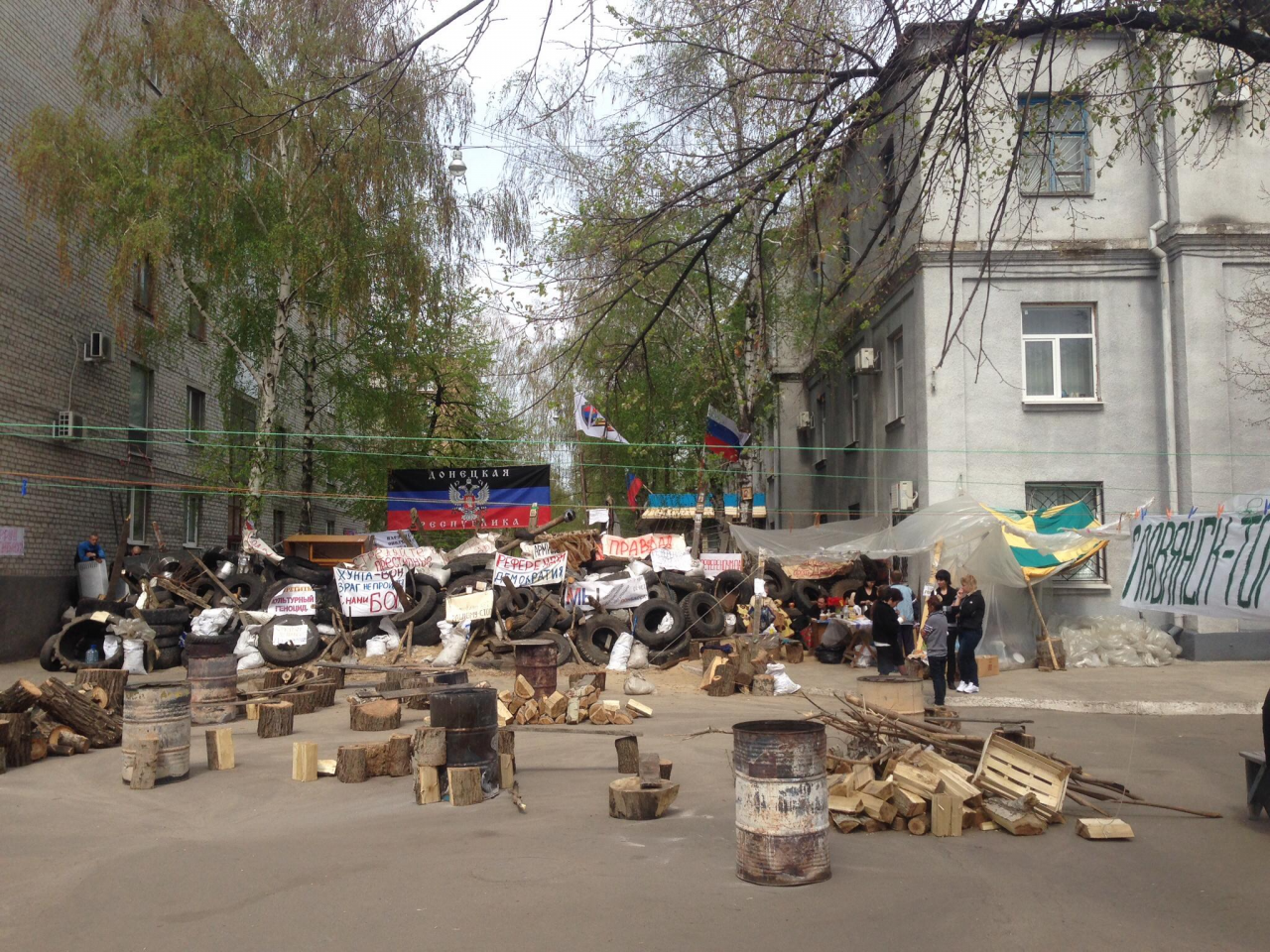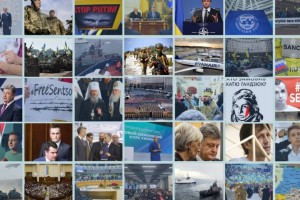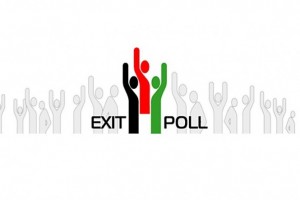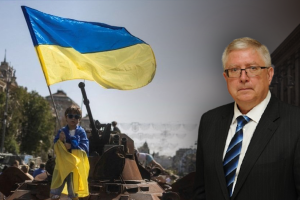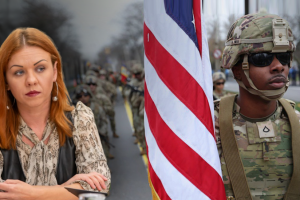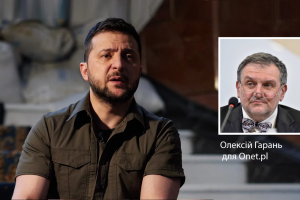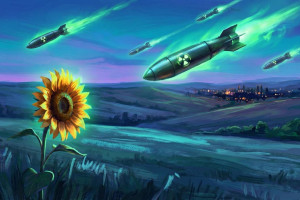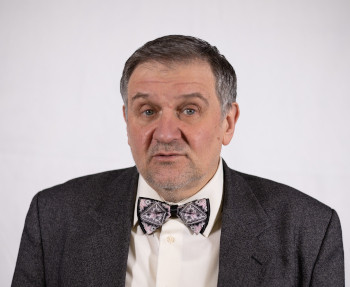
доктор історичних наук, професор кафедри політології НаУКМА, науковий радник Фонду "Демократичні ініціативи" імені Ілька Кучеріва
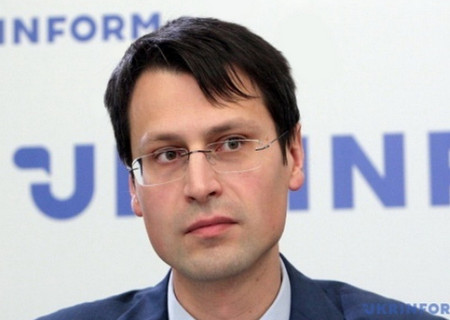
Виконавчий директор Фонду "Демократичні ініціативи" імені Ілька Кучеріва
PONARS Eurasia Policy Memo No. 807 (PDF)
During the first days of the full-scale Russian invasion of Ukraine on February 24, 2022, some Western governments muttered that if the blitzkrieg on Kyiv succeeds, they might accept Ukraine’s defeat and Russia’s occupation. Even after repelling the invaders and seven months of war, some key NATO countries are still unsure whether they must do everything possible to isolate Russia and help Ukraine win. Although a Ukrainian success has never been a synonym for a collapsed Russia, the West has generally not wanted to provoke President Vladimir Putin and escalate the conflict. However, supporting the Ukrainian resistance in its own homeland is separate from reducing the spillover of war (including nuclear) beyond Ukraine’s borders. As fighting continues and Russian rockets hit civilian areas, if Kyiv steps back in any type of “cooling down” posture, the Kremlin will only regroup, further interrupt Western assistance, and attack again.
Western Objectives
Back in December 2021, Washington was observing Russia’s military formations near Ukraine, but its main concerns were about reducing provocations while figuring out how to assist the Ukrainians in defending themselves. As the war approached, the goal was to enforce the rules-based international order even while Russia, with its extraordinary army and nuclear arsenal, strove to destroy it and would soon start the largest armed conflict in Europe since World War II. At the time, U.S. government policy on the matter involved four main tasks:
- Avoid conflict between the U.S. military and NATO with Russia.
- Contain the war inside Ukraine.
- Strengthen and maintain NATO unity.
- Give Ukraine the means to fight and defend itself.
These goals were reinforced at the NATO Madrid Summit in June 2022, where Western allies called Russia a significant, direct threat, agreed to strengthen their deterrence and defense, provide non-lethal defense equipment to Ukraine, and assist member states in providing lethal support to Ukraine. But considering the goals have some incongruencies and conditions change over time, the question remains: would a Russian defeat or stalemate be the best outcome for the United States, Europe, and NATO?
Before February 24, there was a strong impression that neither the United States nor Russia had legitimate concerns or strategic reasons to use their nuclear arsenals for offensive purposes, even though both sides deliberately remained ambiguous about the “no use first” policy.[1] Thus, the first and main issue for the West is preventing direct or indirect conflict between nuclear powers. However, after the beginning of the invasion of Ukraine, Russia clearly demonstrated that it was going to threaten its foes with nuclear strikes, with the main purpose being to reduce the West’s involvement on the side of Ukraine. Although the United States and NATO openly communicated their non-nuclear-oriented posture to Moscow before the war, it decided that it would flex its nuclear forces as a tool to guard its so-called “sphere of influence.”
The invasion of Ukraine changed the strategic situation in Europe. Historically neutral Sweden and Finland urgently requested and received accession to NATO. Although both countries have strong conventional capabilities to respond to a potential Russian attack, they feared they could be left alone if Moscow combined conventional attacks with nuclear blackmail.
If the United States had been consistent with its core objective to avoid kinetic conflict with Russia, it would have resisted calls from Helsinki and Stockholm. However, the state of the Finnish and Swedish defenses and their comparison vis-à-vis the capabilities of the Russian army—as observed in Ukraine—decreased the likelihood of nuclear confrontation caused by Finland’s and Sweden’s accession to NATO. Unlike the majority of current NATO members, Sweden and more-so Finland have been ready to repel Russian attacks with formidable power. “We have systematically developed our military defense precisely for this type of warfare that is being waged there [in Ukraine], with a massive use of firepower, armored forces, and also airforces,” Finnish General Timo Kivinen said. At the same time, Sweden and Finland, after the collapse of the USSR, did not seek to exploit Russian weaknesses and did everything to develop stable relations with Moscow. These prudent policy courses served as the best safeguard against conflict until 2022.
By accepting Finland and Sweden into NATO, the West’s nuclear deterrence stance was enlarged, which should theoretically decrease the chances of a direct and dangerous confrontation between the West and Russia. In public, Russia called Finland’s and Sweden’s accession “threats” and said they would place more troops and weapons at the northwest border. However, in reality, the Russian ministry of defense moved troops from the Finnish border and sent them to fight in Ukraine.[2]
From this point of view, a Russian defeat with the eventual withdrawal of its armies from Ukraine, even without a formal ceasefire, would mean that the Russian leadership decided to de-escalate its confrontation with the West (due to the high cost of war in multiple dimensions). The hard lesson of Ukraine has been showing Russia the limits of its hard power regionally and of its power projection in Europe. It makes direct Russian threats toward NATO unnerving but realistically irrelevant. No doubt, if it vacated Ukraine, it would remain extremely hostile, but it would rely on nuclear deterrence to protect its homeland rather than on its deteriorated conventional military forces.
Alternatively, if Russian troops continue to hold territories it seized after February 24 and Russian oil and gas exports provide money to buy non-Western dual-use technologies to produce arms and heavy weapons, the conclusion could be different. It would prove that Moscow’s path of direct confrontation with the West delivers desired political and strategic benefits to Putin in the near neighborhood and inside the country.
Ukrainian and Russian Objectives
It is necessary to recall how the Russian authorities behaved a year ago in March-April 2021, when tensions were high in the Donbas. Moscow doubled its domestic efforts to reconstruct Ukraine as a “grave threat” to Russian security, as we explained in a PONARS Eurasia Commentary. Prolonging the East-West war through the occupation of Ukrainian lands is consistent with the “Russian World” ideology, which helps Putin mobilize the masses. The recent killing of Darya Dugina might be an element of a propaganda campaign to continue the “special operation” until more or all of Ukraine is taken. After all, “Dugin’s imperialist ambitions made Putin look moderate,” according to The New Yorker.
In 2021, Russia made the decision to invade Ukraine when it realized that Kyiv had avoided the trap of the flawed Minsk agreements and continued further integration with the West even after a complete overhaul of governmental power in 2019. Any “cooling down” to avoid further war destruction at the cost of losing more territories to Russia will only re-start Russian aggression in particular areas while striving to break Western military assistance (hence the “routine” nuclear threats from Moscow).
The West’s objective of containing the conflict within Ukrainian territory can be achieved if Ukraine receives relevant and timely military assistance to defend itself from Russian armies. Modern arms, munitions, and equipment are critical prerequisites for winning the war with Russia. As academic and former Secretary of the National Security and Defense Council of Ukraine (1996-1999) Volodymyr Gorbulin proposes, “Today, under martial law, the defense industry can and should transition from market principles to strict directive planning by central executive bodies of the range and volume of products intended for supply to the Ukrainian Armed Forces and other military formations.” Moreover, this would be a crucial foundation for Ukraine’s post-war security and defense within a “Fortress Ukraine” paradigm.[3]
A deal that broke the Russian maritime blockade and allowed Ukrainian grain export from the Black Sea ports, perceived as a fragile step toward decreasing hostilities, was the result of the great successes of the Ukrainian Navy and humiliating defeats of the Russian Black Sea Fleet. It came after Ukraine obtained high-precision artillery, assault drones, and anti-ship missiles from NATO countries. In this case, military aid brought Ukrainian military successes that resulted in tentative diplomatic agreements contributing to positive economics and even peace.
If Western military aid is not sufficient enough to generate decisive results, the unpredictability of the war will only increase. Ukraine cannot achieve a minimal level of security with theoretical reinforcements, and both sides are not prone to accepting failures. Russia can involve Belarus more, or Iran (for drones and short-range ballistic missiles), or North Korea, while Ukraine can wish for more foreign volunteers or even regular troops from NATO countries, for example, not to fight in the field but to operate newly received, sophisticated military equipment.
Therefore, the pursuance of any kind of military stalemate would only provoke both Russia and Ukraine to try harder to change the balance in their own favor, which would lead to escalation and spillover of the war beyond Ukrainian borders. While Putin remains the key decision maker who could change the course of the war, Ukrainian President Volodymyr Zelensky must ride his people’s opinion, driving the conflict erratically toward more hawkish or dovish positions.
Public Opinion
Where does Ukrainian public opinion stand? The burden of war has been transforming public perception. According to a DIF poll in May 2022, in eleven main regions of Ukraine, 41 percent wanted to see the expulsion of Russian troops from all of Ukraine and the full restoration of state control. The same number (41 percent) believe that victory entails the total defeat of the Russian army and assistance to a domestic Russian insurgency to disintegrate the ruling regime. Three months later, a DIF poll showed that the perception of victory involving the liberation of all occupied territories became dominant (55 percent) while the struggle to collapse the Russian ruling regime garnered fewer supporters than before (20 percent). Only 3 percent of Ukrainians believed that the war will stop if Russia keeps its occupied territories, and only 7 percent thought that victory means a return to the status quo before February 24. Ukrainians demand victory as a means to stop the war, and the liberation of occupied territories as a guarantee that Russia will not use them again as springboards for more assaults.
Putin’s decision to force a “partial mobilization,” which resulted in sending thousands of unprepared men to war, combined with his “incorporation” of Russia-occupied Ukrainian lands, proves that Ukrainian concerns are fully justified. It is unlikely that the Ukrainian authorities can speculate about any kind of territorial concession because, now, there have been numerous instances of torture and genocidal mass killings committed by the Russian army and security services—as revealed recently in the liberated areas of Kyiv, Chernihiv, Sumy, and Kharkiv regions. We have seen deliberate Russian missile attacks meant to destroy critical civilian infrastructure. DIF polls in the cities of Mykolaiv and Zaporizhzhia, which suffered from such attacks in July-September, showed growing anger among the populace, making people think about victory as disintegrating Russia and its army. Thus, any prolongation of the war, with its ongoing atrocities, invigorates Ukrainian public radicalism and hatred toward Russia. Today, 85 percent of Ukrainians blame the Russian authorities for the war—such attitudes leave no public appetite for compromising with Russia.
Conclusion
The high cost of the war and its unpredictability raise questions about how Ukraine and Russia can sustain a long fight with changing goals. Over time, the West has become increasingly involved, gaining influence over Kyivan conflict dynamics, but it has maintained its reservations and cautiousness. If it decides to continue its limited, portioned military aid to Ukraine, Kyiv will be unable to speak to Moscow from a position of potency or liberate its occupied territories, thus encouraging Moscow to regroup and attack. Presently, the Ukrainian public supports a victory that brings security to Ukraine without overly threatening Putin’s regime, bringing up the well-worn idea that “regime preservation” is Putin’s primary priority and weak spot, as Mary Glantz at the U.S. Institute of Peace writes. While increasingly concentrating on redeeming his regime, Putin lashes out at innocent Ukrainians, who increasingly have hardened views toward Russia.
[1] See: Polina Sinovets, “How the ‘Escalation Strategy’ Evolved in Russia’s Security Policy,” PONARS Eurasia Policy Memo No. 708, September 2021.
[2] See: Nurlan Aliyev, “Russia’s Icebreakers, North Sea Route, and Invasion of Ukraine,” PONARS Eurasia Policy Memo No. 797, September 2022
[3] See: Mariya Omelicheva, “Fortress Ukraine,” PONARS Eurasia Policy Memo No. 797, June 2022.

